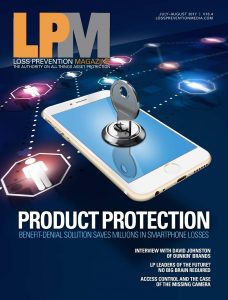(This article originally appeared in Loss Prevention Magazine)

Brick-and-mortar didnt die, and Amazon just confirmed it with its purchase of Whole Foods. Unless you live under a rock, you have seen the news related to Amazon’s purchase of Whole Foods for more than $13 billion. Over 90 percent of retail purchases are made in-store today. So why all the news of store closings and retailers that are underperforming?
Have all the mergers and acquisitions over the years made some retailers too big to maintain their size, or have some retailers not evolved with the change in consumer behaviors? Could it be that customer expectations have changed rapidly in the last five years with technology? What role does the Internet play?
Today, customers are more educated than ever on product costs, sales, and quality. The Internet allows customers to be more educated than ever and to set the tone for the experience and their expectations. Don’t forget that the demographic of the world is changing, and there are more people from more generations than ever. So how does a retailer cater to everyone? While I certainly don’t have the exact answer, I want to throw out a few things that Amazon has done to continue to grow and thrive, regardless of their success, profitability, or longevity.
Amazon Prime
The Amazon Prime service has a fee associated with it but is very similar to a loyalty program. For a yearly fee, you get expedited shipping and access to content like music, videos, and books. All the benefits are tangible and easy to understand. When you think of loyalty programs, normally what comes to mind is airlines and hospitality. While airlines and hospitality seem to have the loyalty piece figured out, it’s far from being straightforward and often has a lot of confusing fine print. Amazon Prime, on the other hand, was designed to be simple: pay this fee every year, and—bam—you get benefits. Free two-day shipping, a better price in some circumstances, free content like videos, music, books, and magazines, and access to digital services are only some of the perks. Amazon Prime is more about the customer experience and the technology itself. While most will look back and say Amazon is a technology company, I would challenge you to think about how they use technology to enhance the customer’s experience.
Amazon Go
Amazon Go, while technically still a pilot, is a small-footprint store with minimal customer detractors. This allows the customer experience to be quick and easy. It can be considered the next generation of self-checkout. While the Amazon Go concept is still in pilot, it draws attention to the fact that Amazon is always geared toward the customer experience or at least the presentation is. Amazon Go uses advanced technology to allow the customer to go into a store, pick up an item, and leave without ever interacting with a cashier or point-of-sale (POS) system by using a smartphone and sensors throughout the store. My point with Amazon Go is not whether it is a good or a bad idea. The simple fact is that Amazon is consistently willing to try to enhance the customer experience.
Amazon Books
Amazon Books is a brick-and-mortar bookstore with a lot of extras. When you think of Amazon Books and you include Amazon Prime, it takes the best of both worlds and combines them together. Amazon Books has a select number of products generally in the most popular categories and allows you to shop as you would in a regular bookstore or with your app. You can use your app to pay, or you can pay in a normal fashion. If you’re a Prime customer, you receive all the price and extra benefits of Prime while you’re in the store. Much like the Apple Store, Amazon Books stores are extremely modern from the lighting to the setup itself. While I only had an opportunity to go into two Amazon Books, the experience is fun and quick with fast and friendly service.
Whole Foods
Lastly, why would Amazon buy Whole Foods? For starters, Amazon has been working on same-day grocery delivery for some time. Delivering fresh groceries is much more challenging because they’re perishable and a lot more susceptible to damage in delivery. Amazon’s acquisition of Whole Foods, in my opinion, is about a logistics and supply chain—a bigger network of warehouses to get customers fresh food within four hours.
Retail Loss Prevention
At this point, if you’re asking yourself what this has to do with retail loss prevention, I hope I can tie it together. What Amazon has done, and some retailers have failed to do, is figured out how to create a customer experience that is conducive to the evolution of technology, economic state, and the generational differences. So the next time you think of tackling a loss prevention challenge like shrink, I would recommend taking a step back and taking those three considerations. For example, twenty-five years ago, if you had a problem in the store, your first inclination may be to lock it up or staff the store. What if you found ways to sell the product quicker, faster and better while increasing inventory visibility by utilizing RFID to pinpoint the problem?
Another example could be working with real estate to determine risk. In the past, you would look at crime and other statistics. Today, you can use your advanced marketing model, customer shopping behaviors, and your dot-com data on orders. What about identifying a dishonest customer today? You could reverse your good marketing models to see the bad customers.
Lastly, with EAS in the past, you would look at an AM or RF solution. Today, you can use an RFID solution to protect your product while enhancing your inventory to help fulfill online orders.
My point here is not that Amazon is a danger but rather a company that should help raise the bar for all of us. Use all your data and resources. Always think of the customer experience first. Remember that more than 90 percent of people still shop in a store. Make their experience great, so it stays that way. Always think bigger.


